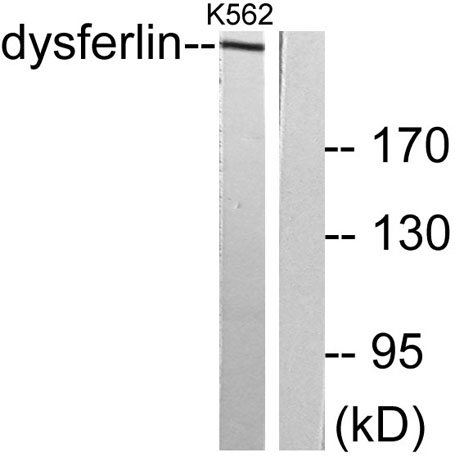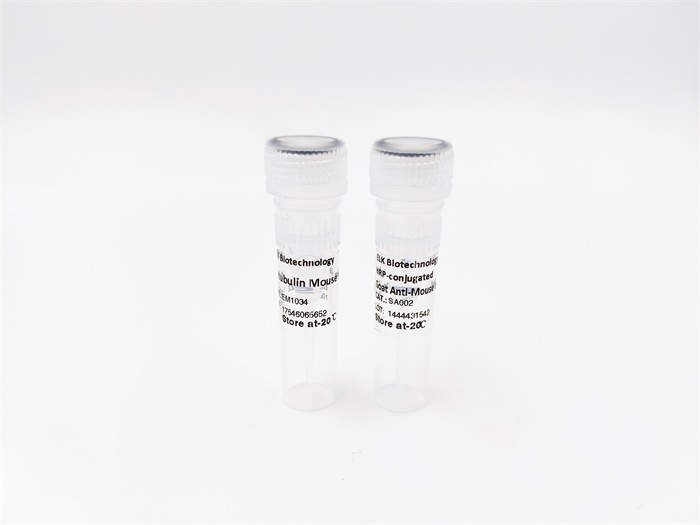






Dysferlin rabbit pAb
 One-click to copy product information
One-click to copy product information$148.00/50µL $248.00/100µL
| 50 µL | $148.00 |
| 100 µL | $248.00 |
Overview
| Product name: | Dysferlin rabbit pAb |
| Reactivity: | Human;Mouse |
| Alternative Names: | DYSF; FER1L1; Dysferlin; Dystrophy-associated fer-1-like protein; Fer-1-like protein 1 |
| Source: | Rabbit |
| Dilutions: | Western Blot: 1/500 - 1/2000. Immunofluorescence: 1/200 - 1/1000. ELISA: 1/10000. Not yet tested in other applications. |
| Immunogen: | The antiserum was produced against synthesized peptide derived from human Dysferlin. AA range:1981-2030 |
| Storage: | -20°C/1 year |
| Clonality: | Polyclonal |
| Isotype: | IgG |
| Concentration: | 1 mg/ml |
| Observed Band: | 240kD |
| GeneID: | 8291 |
| Human Swiss-Prot No: | O75923 |
| Cellular localization: | Cell membrane, sarcolemma; Single-pass type II membrane protein. Cytoplasmic vesicle membrane ; Single-pass type II membrane protein . Cell membrane. Colocalizes, during muscle differentiation, with BIN1 in the T-tubule system of myotubules and at the site of contact between two myotubes or a myoblast and a myotube. Wounding of myotubes led to its focal enrichment to the site of injury and to its relocalization in a Ca(2+)-dependent manner toward the plasma membrane. Colocalizes with AHNAK, AHNAK2 and PARVB at the sarcolemma of skeletal muscle. Detected on the apical plasma membrane of the syncytiotrophoblast. Reaches the plasmma membrane through a caveolin-independent mechanism. Retained by caveolin at the plasmma membrane (By similarity). Colocalizes, during muscle differentiation, with |
| Background: | dysferlin(DYSF) Homo sapiens The protein encoded by this gene belongs to the ferlin family and is a skeletal muscle protein found associated with the sarcolemma. It is involved in muscle contraction and contains C2 domains that play a role in calcium-mediated membrane fusion events, suggesting that it may be involved in membrane regeneration and repair. In addition, the protein encoded by this gene binds caveolin-3, a skeletal muscle membrane protein which is important in the formation of caveolae. Specific mutations in this gene have been shown to cause autosomal recessive limb girdle muscular dystrophy type 2B (LGMD2B) as well as Miyoshi myopathy. Alternative splicing results in multiple transcript variants. [provided by RefSeq, Aug 2008], |

 Manual
Manual